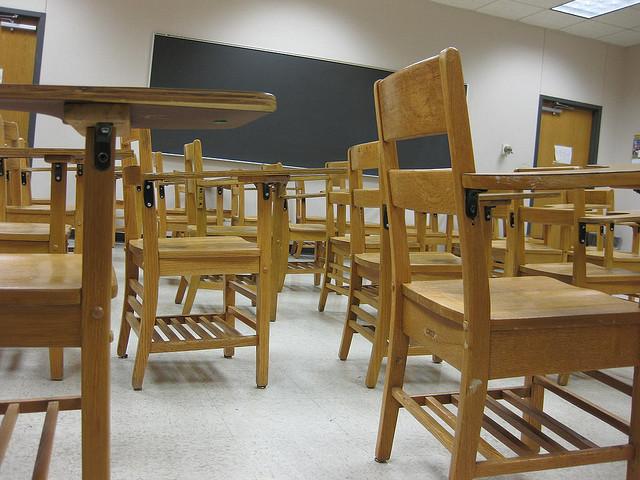While the truancy average in southeast Wisconsin schools still nearly doubles the state average, a recent report shows an overall increase in southeast Wisconsin students’ college readiness.
The report was published by the Milwaukee-based Public Policy Forum. Joe Yeado, senior researcher for the Public Policy Forum, said there were several positive highlights in this year’s report, which include growth in minority student enrollment, improvement in college readiness measures and decrease in number of students in poverty. According to the report, the percentage of students eligible for free or reduced-price lunch went down from 46.1 percent to 44.9 percent within the last year.
Students from low-income backgrounds also showed an increase in attendance and decrease in dropout rates, Yeado said. The dropout rate fell to 1.7 percent, the lowest it has been since at least 1998.
“A big finding was that the percentage of students in public schools in poverty decreased for the first time in more than a decade,” Yeado said.
Improvements in college readiness measures, such as ACT and Advanced Placement exam scores, were also observed in the report, Yeado said. Higher student participation rates in AP courses and ACT tests have increased student access to college, he said. The high school graduation rate in southeast Wisconsin has also been increasing consistently and is currently 84 percent, which trails the statewide rate of 88.6 percent, according to the report.
But despite significant improvements in several academic measures, the report states public school enrollment has declined by 0.8 percent. Moreover, significant achievement gaps have been noticed among students belonging to certain groups, Yeado said. Students of color and low-income students have lower graduation rates and test scores.
“Southeast Wisconsin continues to have achievement gaps for students of color and low-income students,” Yeado said.
Arthur Rainwater, clinical professor in educational leadership and policy studies, said the issue of achievement gaps between students from marginalized groups, such as those of color or low socio-economic status, is not a new one.
Rainwater said there is a national unwillingness to provide equal and high quality educational opportunities for all children regardless of their racial or economic backgrounds. It is a problem that also touches Madison, not just southeast Wisconsin, he said. According to a study, in Madison, 66 percent of African American students graduated in 2009-2010 while 96 percent of white students did.
While the forum’s report analyzes data on an annual basis, Rainwater said it is important that the achievement gap issue is looked at as a long-term issue instead of an annual one. He said alleviating the problem requires a multi-step process that includes financial and emotional commitment.
“If in each step of the way you have access to the right foundation, the instruction is appropriate and the way of assessing your learning is appropriate, then you have opportunity,” Rainwater said.
Rainwater said the problem is more of an “opportunity gap” than an achievement gap. Data indicates that there is unequal access among students to useful AP and ACT exam preparation programs, Yeado said. Rainwater said the lack of access to opportunities for some students prevents them from building a solid foundation that can help them be successful in life.
While test scores are key indicators of access to college, many students do not receive enough support or preparation because of factors like their race, parents’ income level, parents’ education level and their language, if they are non-native English speakers, among many others, Rainwater said.
Rainwater said that by making the focus of measuring college readiness on test scores, other factors that often have a more profound impact on a child’s education are left out.
“The goal of school is obviously not test scores,” Rainwater said. “It’s to have an educated child that has the maximum number of options possible and the ability and desire to be a successful adult.”


